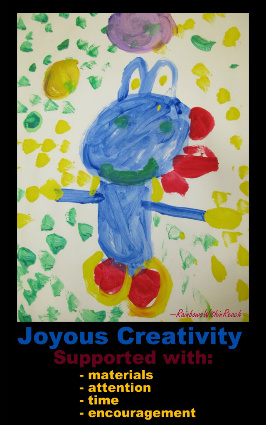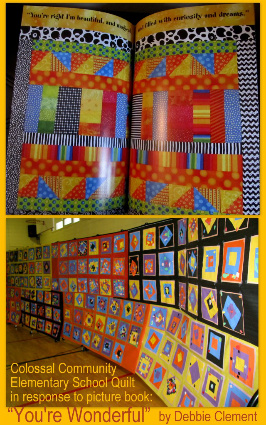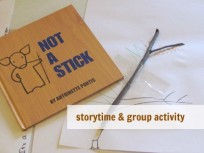 Guest Post by Debbie Clement
Guest Post by Debbie Clement
In kindergarten I won a coloring contest and picking up my award made quite an impression on me. I went on to earn a degree in Fine Arts, teach elementary school art, and from there have gone further to create picture books as both author and illustrator. My newest book has received a national award of excellence!!! All of these milestones occurred in my life because I was encouraged to create as a young child. What can you do to encourage fostering creativity in the young people in your life and why should it be a priority?
As our world moves forward at mach-speed, it is ever more imperative that we think creatively, think outside the box, and cultivate our unique set of skills bringing them to every problem. Nurturing the skill of creativity needs to be our highest priority for children, whether we interact with them as parent or teacher. We need to nurture the questioning spirit that is natural in young children, fostering their spirit of inquisitiveness while listening to their schemes and brain storms with genuine interest.
One of the easiest ways to foster a spirit of imagination is to listen to the children in our lives. Listen to their stories. Listen to their questions. Listen to their interests, to their wonderings, to their curiosities. Listen to their inquiries, to their hopes. Listen to their songs and their stories. Children have dreams of being astronauts and archeologists. They dream of distant planets and dinosaur bones, of tree houses and excavations, of foreign lands and make-believe characters. When we listen and offer tools for exploration of these dreams we support the child’s longing for their wider world.
Beyond listening we can offer tools: building blocks and dirt, play-doh, glitter, soap bubbles, paint, tissue paper and glue, buttons, puppets, scarves and blankets, drums and kites. When we offer crayons and paper-mache, cardboard and costumes, wiggly eyes, tubes, construction paper and screws, the whole gamut of pieces and parts that invite open-ended construction with no-wrong-answer combinations, we show our interest in the very process of creating. We can watch close at hand and observe the color combinations, the balance and form emerging from the child’s imagination. From the very first squiggle drawn in shaving cream to the highest towering castle of building blocks, we stand and observe, coax and support, all the while extending creative play by offering our time and attention and therefore valuing its worth.
My favorite suggestion is to value your child’s work by asking questions. What is your favorite part of your painting? Can you tell me where that idea started? Where did you get the inspiration to build this project? Where do you think we could display this drawing? Would you like to perform your story for an audience? Allow even the youngest child to appreciate their own effort by speaking to you about it. Roll up your sleeves, open your heart and ears fostering creativity, and let the children paint!
Debbie Clement is an award winning arts educator, performer and children’s book author/ illustrator. A renowned advocate for arts education Debbie spreads this passion through her company Rainbows Within Reach as well as speaking and performing at conferences, schools, libraries. For more inspiration check out her blog too !




Amber says
I have a seven-year-old who is a prolific artist. For a while, I tried enrolling her in classes and so on, but she didn’t enjoy them. I’ve discovered that having lots of art supplies, time and space to create, and the occasional library book for ideas, has been all she needs. It’s amazing to watch her create – it inspires me every day.
Terri says
Wonderful post Debbie! I need to make note of these questions. My 4-1/2 year old is very, very interested in art and creating. I’m trying very hard to do all I can to encourage and not discourage. It’s so much fun just to see what she comes up with! Love, love this post!